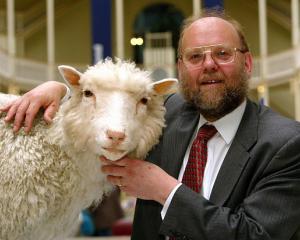Isleworth 'Mona Lisa' an earlier da Vinci work DavidFeldman vice-president of the Mona Lisa Foundation, Switzerland, takes issue with Monday's Artbeat column and argues the Isleworth/earlier Mona Lisa is genuine.
For this painting to be accepted in the canon of Leonardo's work, it must be established there were two Mona Lisas, and that this is the other.
"There is no basis for thinking there was an earlier portrait," said Julia Morrison (who is referred to in the article) to the BBC.
Consider the documented historic evidence.
1.Both Francesco del Giocondo in c.1501 and Giuliano de Medici in c.1515 commissioned portraits of the Mona Lisa.
2.Raphael when he first copied Mona Lisa in c.1504 included flanking columns in his sketch as did many copies, but not the Louvre painting. There must have been a version of Mona Lisa with columns.
3.A 1517 account describes a "finished" Mona Lisa painting. A 1550 account describes what must be another as "unfinished".
4.Respected art historian, Gian Paolo Lomazzo, described in his 1584 art treatise that Leonardo painted a "Gioconda, and a Mona Lisa".
All these facts, especially when taken together, would point to the existence of two Mona Lisa paintings.
A host of arguments support the attribution of the Isleworth Mona Lisa to Leonardo. Prof Kemp dismisses it as a copy. The conception, dimensions, columns, subject, landscape, sitting angle, embroidery, underpaintings, and extra detail are quite different, pointing to it being an original painting.
What then makes it a Leonardo?
1. The painting is of a younger woman. Art forensics show this is the same subject as the Louvre version, with about 11 years age difference.
2. The subject is shown between flanking columns, the bases of which are the finest of any Mona Lisa and which, unlike those in the Louvre painting, reflect light and shadow, a Leonardo autograph.
3. Many established experts admire the beauty of the face, which sets it apart from all copies.
4. The dating of the canvas points to this painting predating the Louvre version.
5. The larger format of the painting shows more surrounding detail than the Louvre version especially at the bottom. Details below the right arm are similar in both paintings and not visible to the naked eye, and consequently most likely executed by the same artist.
6. Leonardo was fascinated by knots: the embroidery knotting is completely unique, more complex than the Louvre version and any Mona Lisa copies, which are all the same.
7. Leonardo was the only known important left-handed artist of this period. Left-handed brushstrokes originally noted on the neck have also recently been identified on the left cheek and right hand.
8. Leonardo was preoccupied by geometry at that time; the painting is larger than the Louvre version, yet the figure portrayed is about 10% smaller. When brought to the same size their "hidden" proportions are exactly the same.
9. Scientific tests of the brushstrokes by their pixel concentration, of elliptical characteristics, amplitude histograms, and of the palette each confirm that important sections of the Isleworth/earlier version are by the same artist as the Louvre version.
In the words of distinguished research physicist John Asmus, "significant portions of the Isleworth painting were executed by Leonardo da Vinci.
Further, it is my opinion that the entire body of scientific and historic evidence in support of this conclusion is more substantial and extensive than for many of the works widely attributed to da Vinci".










